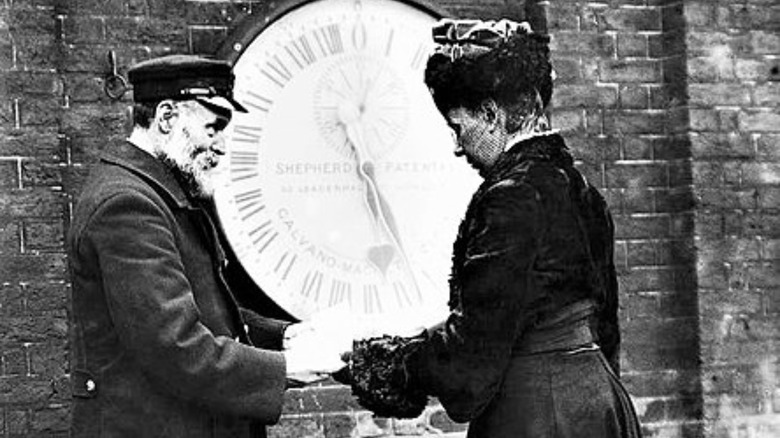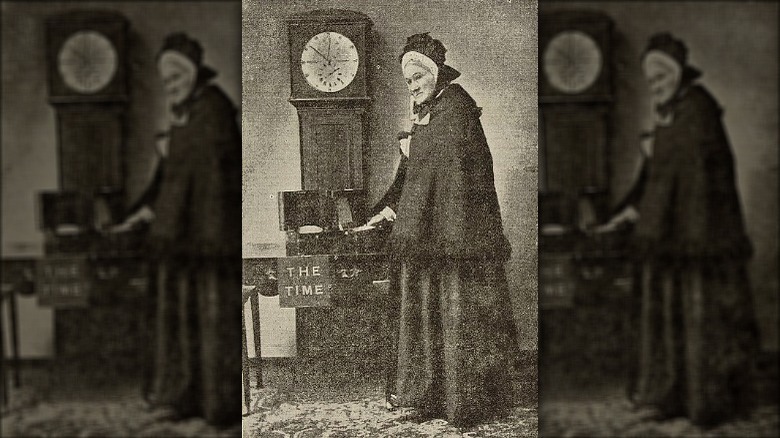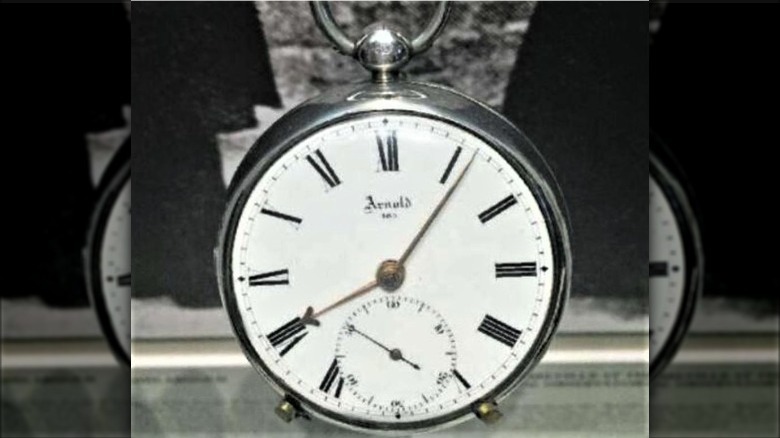The British Woman Who Sold Time For More Than 40 Years
There are countless companies that make money with goods and services that simplify our busy lives. Stores that offer online delivery mean people no longer have to physically go to stores to shop. Online meeting apps mean that we can save ourselves the time of a commute to the office each day. And robot floor cleaners mean we no longer have to make the effort to use a vacuum cleaner for half an hour each week. Ultimately, these products and services all have one thing in common: they are selling us the promise of more free time.
But in Britain back in the late 1880s and early 1900s, time was sold in a different sense. Back then, a woman by the name of Ruth Belville, known around London as the "Greenwich Time Lady," made a living through a curious and singular industry: the selling of the correct time from her priceless chronometer watch, known affectionately as "Arnold." Chronometers were a major breakthrough in timekeeping, and Arnold is believed to have been able to keep time to within a tenth of a second, far more accurately than regular timepieces available during the period.
Though little remembered today, Belville was a local celebrity in her time, known for being both reliable as clockwork and for her incredible longevity, even in the face of strong competition that threatened to destroy her business for good.
Ruth Belville's father started the time industry
The story of the Greenwich Time Lady begins with her father, John Belville, who worked as a senior astronomer at the Royal Observatory in Greenwich, the area of London which dictates Greenwich Mean Time and, as a consequence, the timezones of the entire world.
Belville had arrived at Greenwich as a teenager under the guardianship of an Astronomer Royal, who put him to work as an assistant. Belville is believed to have possibly been a refugee from the French Revolution though details of his early life are scant. He soon grew into his role at the Observatory, though, and married and started a family in London.
With the observatory housing the most accurate clock in the country, clockmakers would regularly send their employees to take their devices to Greenwich to ensure they kept the correct time. Soon, however, Belville was taking the time to them, using his trusty "John Arnold & Son" timepiece originally built for the Duke of Sussex, per Science Museum Group. By 1836, John Belville had a client list of 200 subscribers, who would buy the time from him each week. He continued his service for 20 years. After his death, it passed to his wife, Maria (pictured), and, later, Ruth, whose longevity took the service all the way into the 20th century.
Ruth persevered in the face of fierce competition
Even in John Belville's day, there were others attempting to find more ingenious ways to share Greenwich Mean Time with the people of wider London, such as via the use of telegraph receivers in the city's offices. It was only in Ruth's time, however, that competition really started to heat up.
In 1908, St John Wynne of the Standard Time Company publicly ridiculed Ruth Belville's service, labeling it antiquated and suggesting that it was only because Ruth was a woman that people indulged her, according to Horology-Stuff. Later, technology began to overtake her simple service. In 1924, the BBC began broadcasting the sound of Big Ben chiming over the radio to mark the passing of each hour, and in 1936 came the arrival of the "speaking clock" which could be accessed by telephone.
But Belville wasn't to be beaten so easily, even though she had modern technology and a large aggressive company against her. At the moment when most would have expected her to retire, Belville carried on, making the weekly trip to the Greenwich Observatory and completing her 12-mile daily round of her clients until she was well into her ninth decade. She retired in 1940 at the age of 86, when she was given a pension by the London Clockmakers' Company. She died in 1943, at the age of 89, and bequeathed Arnold to the company.


